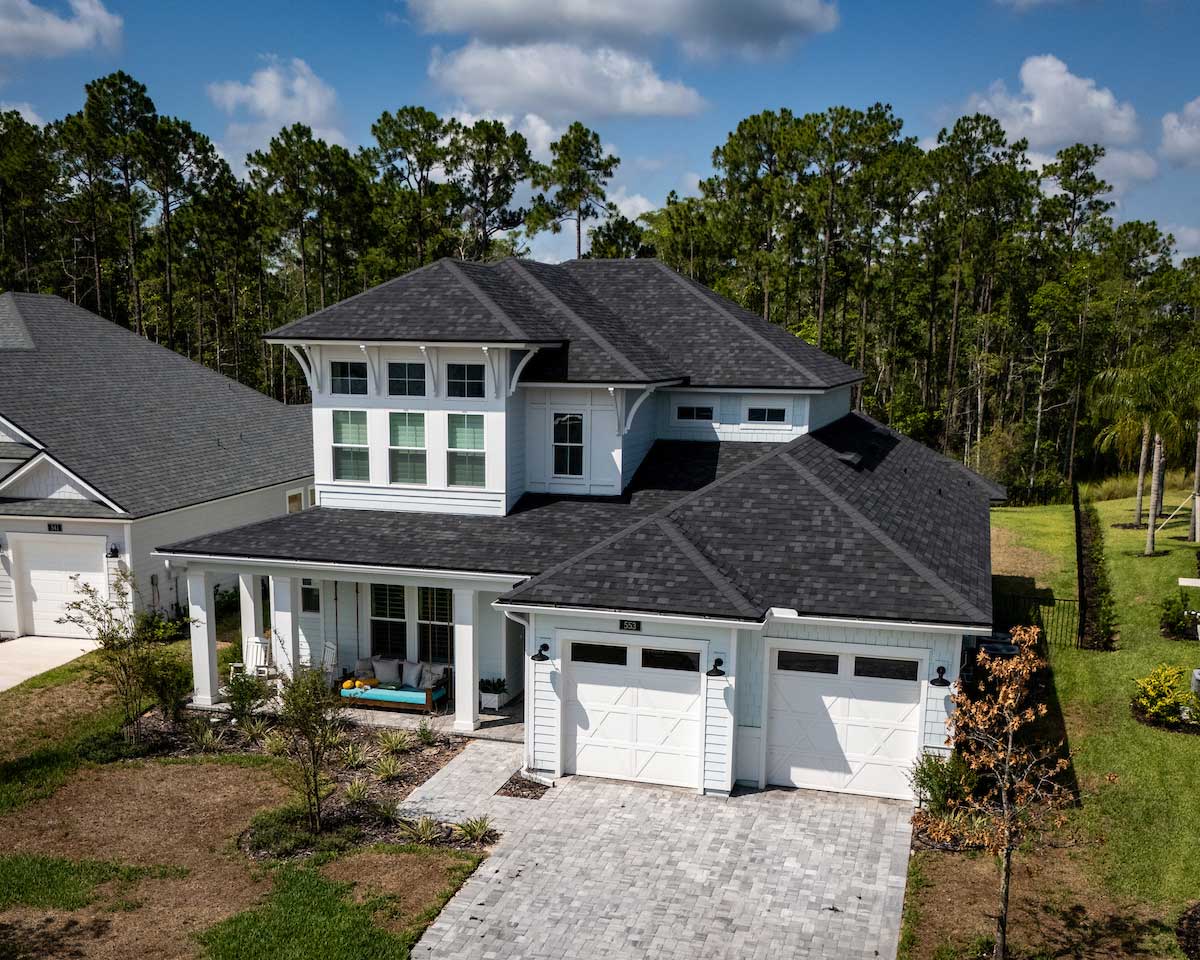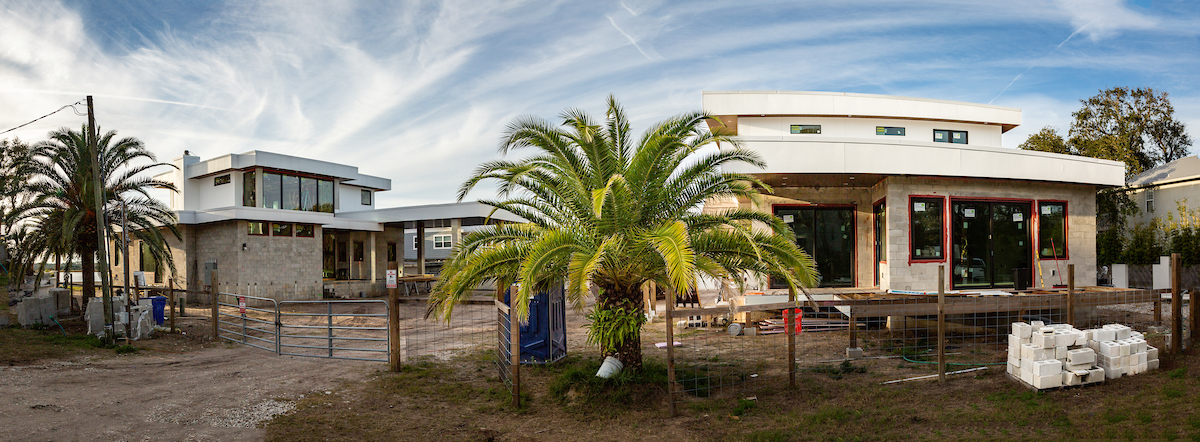Home » Roof Designs and Their Pros and Cons
Choosing the right type of roof for a home can be difficult. Each roof type plays a significant role in the style and look of a home and offers different pros and cons. To help you understand the best roof shape for your building, Russell Rowland will explore the three most popular roof designs in modern construction and their pros and cons.

Gable Roofs
If you desire a traditional-looking house, gable roofs are a great choice. Gable roofs are some of the most popular in the U.S. and are recognized by their iconic triangular shape. Allowing for more ventilation by adding height to vaulted ceilings and attics, gable roofs have an appealing aesthetic and work well with all styles of homes, including modern ones. They have a simple design so they have less material and labor costs than more complex designs.
However, building gable roofs in high wind and hurricane prone areas present challenges, but with proper design and construction, these issues can be overcome. High winds can peel away the roofing materials and even detach the roof from the walls if there is too much overhang. If you decide on a gable roof, discuss the design with a structural engineer. Russell Rowland ensures the structure of gable roofs are designed to handle the wind loads in any environment.

Hip Roofs
Hip roofs have four slopes of equal length that meet at the top and create a ridge. The inward slope of the four sides provides more stability than gable roofs. Hip roofs are a good option for areas with snow and high winds. The roof’s slope lets snow efficiently slide off with no remaining standing water. An additional bonus is the potential extra living space or storage space in the attic. Builders can create a bonus room or a dormer using the increased space the roof provides.
There are multiple cons to hip roofs, however. More building material is required because the design is more complex than gable roofs. This, in turn, increases the cost. Adding a dormer can also have complications, as additional seams offer more chances of water leaks forming in the valleys. To prevent water leaks, the roofing system needs to be correctly installed, and proper construction and maintenance are crucial to keep minor problems from turning into expensive repairs. Waterproofing is critical, as valleys can cause the water to pool.

Flat Roofs
Flat roofs appear to have no pitch and are completely flat from the ground but actually they have a slight pitch for drainage and water runoff. Flat roofs are generally used for commercial or industrial buildings but can also be installed on residential homes to give it a more modern design. The flat design is conducive to an energy-efficient home, as you can easily install solar panels. They are also easier to build than pitched roofs and need fewer building materials. If you want extra outside living space, flat roofs can house a garden or deck as well as heating and cooling units.
Be aware that although flat roofs are less expensive to build, they might be more costly in the long run because of roof repair and maintenance.
When deciding on a roof type, consulting a structural engineer is vital. Russell Rowland will determine what kinds will work in your area and what meets your needs. The result is a structurally sound, aesthetically pleasing roof that protects you from the elements.
Alabama
Arizona
Florida
Georgia
Idaho
Nevada
N. Carolina
Ohio
S. Carolina
Tennessee
Texas
Washington